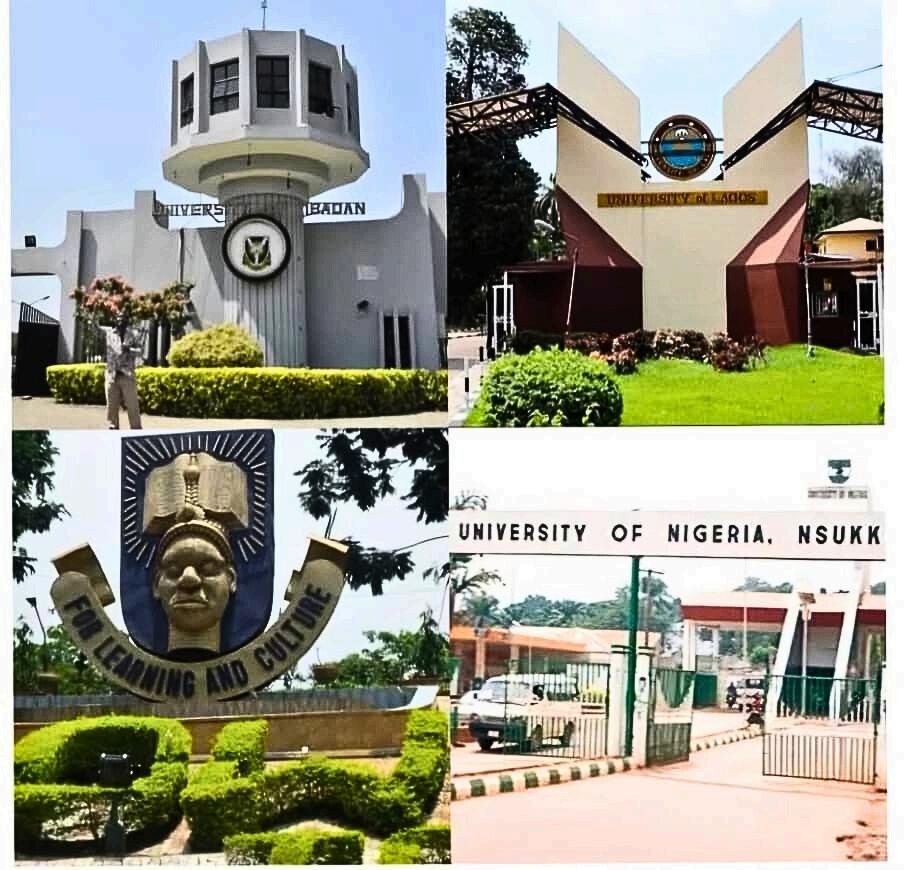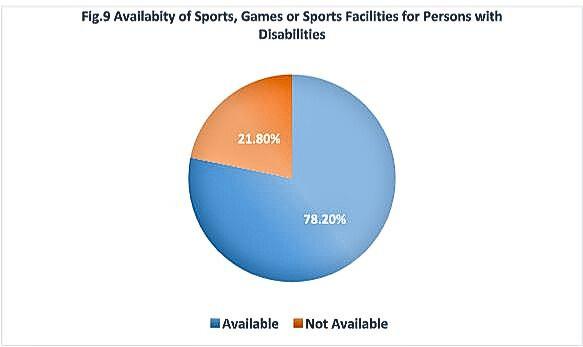INTRODUCTION
The challenges faced by persons with disabilities in Nigeria are numerous. Despite various international laws and protocols, such as the United Nations Charter on the Rights of Persons with Disabilities and the African Charter on the Rights of Persons with Disabilities, which are meant to make life easier for persons with disabilities and have been signed by the Nigerian government, little has changed. Indeed, the challenges faced by persons with disabilities appear to be increasing.
Many of the international charters mentioned above enshrine rights and privileges for persons with disabilities, such as the right to life, education, health, decent living, protection against discrimination, and provision of reasonable accommodation, among others These fundamental human rights are protected under the protocols mentioned Furthermore, Nigeria, through its Discrimination Against Persons with Disabilities Act (DAPDA 2018) 1 , signed into law in 2019 by thenPresident Buhari, also made provisions for these rights At least 26 states in Nigeria have enacted their own disabilities acts, guaranteeing such rights
One of the stipulations of DAPDA 2018 is that all public and private buildings, as amended, must be accessible between 2018 and 2013. A five- year transition period was given to building owners to comply
However, this five-year period has elapsed without concrete action against defaulters In fact, many government buildings have failed this test, and according to DAPDA 2018, building owners who do not comply should be taken to court.
With regard to the right to education for persons with disabilities, facility accessibility is essential Without it, challenges such as mobility and accommodation often lead to students dropping out of school 2 If Nigeria is to guarantee the right to education for persons with disabilities, accessibility must be prioritized Without this foundational support, advocating for the right to education will continue to discourage and disempower young adults with disabilities who aspire to pursue tertiary education
These issues, along with others, prompted the Centre for Disability and Inclusion Africa, registered as Sage Initiative for Disability and Inclusion, to assess the compliance of governments at all levels as well as private individuals who own tertiary institutions, with facility accessibility standards. There is a basic accessibility standard 3 that many are violating, which is denying young adults with disabilities access to tertiary education
Students with disabilities in Nigeria face several barriers that hinder their access to education: inaccessible infrastructure, lack of special education resources, social stigma and discrimination, financial barriers, communication barriers, and lack of quality healthcare
Quality education is a fundamental human right of students with disabilities The UN Convention on the Rights of persons with Disabilities and Discrimination Against Persons with Disabilities Prohibition Act guarantees unfettered access to education for students without discrimination. It becomes mandatory for higher education institutions to make reasonable accommodations for students with disabilities.
1https://www un org/development/desa/disabilities/wp-content/uploads/sites/15/2019/11/Nigeria DiscriminationAgainst-Persons-with-Disabilities-Prohibition-Act-2018.pdf
2 http://guardian ng/news/six-years-after-disability-act-edo-pwds-st-ill-face-daily-exclusion/
3 https://www inclusivefriends org/documents/1727484432163-document-Universal-Accessibility-Checklistfor-the-Nigerian-Built-Environment-Simplified-Version.pdf
Accessible infrastructure is a crucial component of ensuring accessibility and providing reasonable accommodations for students with disabilities
To address these challenges, data is essential for improving educational access for persons with disabilities Evidence-based insights are necessary to understand and overcome the barriers they face.
This survey will provide data on the current situation of infrastructure available to students with disabilities. It also aims to equip education and disability stakeholders with the information needed to make informed decisions
The data collected will be used to engage key decision-makers in the education sector to advocate for policy changes and increased funding.
1.1 RESEARCH AIMS AND OBJECTIVES
1 To assess the accessibility of physical infrastructure in Nigerian higher institutions for students with disabilities and identify existing gaps in infrastructure accessibility
2 To leverage data to advocate for policy changes, rehabilitation, and upgrading of infrastructure in higher institutions in Nigeria The overarching goal of this is to support the learning and active participation of students with disabilities within on campuses nationwide.
3 To track the implementation of the moratorium and the transitional period for the universal design of infrastructures in Nigerian campuses
This study focused on assessing the physical accessibility of higher institutions in Nigeria for students with disabilities It examined 33 tertiary institutions, selected to represent a cross-section of institutions across the six geo-political zones of Nigeria, thus serving as a representative sample of the country’s higher education institutions.
The study evaluates key infrastructural elements, including ramps, elevators, restrooms, signage, sports facilities, wide doors for wheelchair users, and audio-visual and braille instructions in lecture halls. This
comprehensive assessment aims to highlight the physical accessibility challenges faced by students with disabilities
The findings of this study will provide valuable insights to help tertiary institutions improve their infrastructure, ensure compliance with accessibility standards, and foster a more inclusive educational environment
Additionally, the study will serve as a useful resource for policymakers and decision-makers, potentially driving increased funding for accessible infrastructure in Nigerian higher institutions.
2.0 POPULATION AND SAMPLE
2.1 Target Population:
The target population for this study consisted of students from various tertiary institutions across Nigeria, including polytechnics, colleges of education, and universities A total of 33 tertiary institutions participated, representing a diverse array of institutional types and geographical locations
2.2 Sample Size:
A total of 140 students were selected to participate in the survey This sample size is considered appropriate for a preliminary study and aligns with similar research in the field It provides valuable insights into the accessibility experiences of students with disabilities
2.3 Sampling Technique
The study employed a combination of two sampling techniques to select participants:
a Convenience Sampling: This technique involved selecting students who were available and willing to participate in the survey. It facilitated easy access to participants, and was adopted due to time constraints and the logistical challenges of reaching students across multiple institutions
b. Stratified Sampling: This method ensured that the sample was divided into subgroups based on institutional type (polytechnics, universities, and colleges of education). This strategy ensured adequate representation of each institutional type, capturing a broad range of student experiences from different types of institutions.
2.4 DATA COLLECTION METHOD
2.4.1 Instrument Used
A Google Forms survey was designed to collect data on physical accessibility within tertiary institutions The survey method was chosen for its ease of distribution and efficient data collection process.
2.4.1
Survey Structure
The survey was organized into three main sections to gather both quantitative and qualitative data: i. Demographic Information: This section collected background details about the respondents, such as their institution, year of study, and disability status. These details were essential for contextualizing the responses and conducting nuanced analysis.
ii. Accessibility Assessment: This section contained questions on the availability and quality of essential features like ramps, elevators, pathways, signage, restrooms, and classroom access. Respondents were asked to evaluate the accessibility of these features based on their personal experiences.
iii. Experience and Challenges: This section included both Likert-scale questions and open-ended questions to capture students personal experiences and challenges with accessibility. Likert-scale questions assessed satisfaction levels with the accessibility of various campus areas, while open-ended questions allowed students to provide more detailed feedback on specific obstacles they encountered
2.5 Ethical Considerations
In conducting this study, strict adherence to ethical guidelines was maintained. Informed consent was obtained from all participants before they completed the survey, ensuring they were fully informed about the study’s purpose and the voluntary nature of their participation.
Participants were also assured of their confidentiality, with all responses anonymized. Additionally, participants were made aware of their right to withdraw from the study at any time without penalty or consequence.
2.6 Data Analysis
The quantitative data collected through the survey were analyzed using descriptive statistics. Responses were processed using Google Forms built-in analytics tools, including charts, graphs, and summaries. Likert-scale responses were converted into numerical values, and percentages and frequencies were calculated to summarize accessibility trends across institutions. This approach facilitated the identification of common patterns in physical accessibility issues.
For qualitative data, responses were systematically categorized to identify recurring themes and patterns related to accessibility challenges This analysis provided a more comprehensive understanding of the specific issues participants encountered, complementing the quantitative findings
2.7 Limitations
This study had two notable limitations:
1. Self-reported Data: The study relied on self-reported data from participants, which can introduce biases, such as social desirability and recall issues These biases could potentially affect the accuracy of the data.
2. Limited Sample Size: The sample consisted of students from a small number of institutions, and not all students participated This limitation reduces the representativeness of the sample and affects the ability to generalise the findings.
3.0 CONTEXTUAL ANALYSIS
The Discrimination Against Persons with Disability (Prohibition) Act, 2018 safeguards the rights of persons with disabilities by prohibiting discrimination against them In line with this Act, the Nigerian government has implemented a moratorium on all public buildings that fail to meet accessibility standards. This mandate requires that both new and existing public buildings be designed or modified to ensure full accessibility for persons with disabilities
According to the compliance regulations, approval for new buildings will only be granted if architectural plans meet accessibility standards For existing buildings, a 5-year grace period has been provided to retrofit the necessary accessibility features.
Penalties: Institutions that fail to comply with accessibility requirements will face fines, operational restrictions, or legal action
4.0 FINDINGS
This section of the report presents the findings of the study, beginning with the demographic characteristics of the respondents.
This requirement applies to all federal, state, and local government buildings, including schools, hospitals, offices, and transport hubs. It also extends to newly constructed buildings and major renovations in both public and private institutions that are accessible to the public The accessibility standards cover both physical aspects (e.g., ramps, elevators, restrooms, and signage) and digital aspects (e.g., e- governance platforms).
Figure 1 above shows that 70 participants (50%) of those who took part in the study are students, 24 (17%) are staff members, and the identities of 46 (33%) respondents remain undisclosed. This indicates that the majority of respondents are students, giving them a strong position to provide objective insights into the state of facility accessibility within Nigerian tertiary institutions
Data from the pie chart (Fig. 2) above reveals that 76 respondents (54%)are male, 63 (45%) are female, and the gender of one respondent (1%) is undisclosed.
When respondents were asked whether they considered themselves as a person with a disability, 131 (93.6%) reported that they did not have a disability, 7 (5%) indicated that they did, and the remaining 2 (1.4%) chose not to disclose their status.
As Figure 4 shows, 6 (4.3%) of the institutions selected for the study were from the North-Central zone of Nigeria, 6 (4.3%) were from the North-East zone, 11 (7.9%) were from the North-West zone, 19 (13.6%) were from the South-East, 20 (14.3%) were from the South-South, and73 (52.1%) were from the SouthWest. This suggests that respondents were drawn from all six geopolitical zones in Nigeria, with institutions from the South-West dominating.
When respondents were asked whether their institution’s student handbook mentions any provisions, priorities, or policies for Persons with Disabilities (PwDs), and whether their institution is disabilityfriendly, 71 (50.7%) stated that their institution has provisions, priorities, or policies for PwDs, 59 (42 1%) believed that their institution did not, and 10 (7 1%) were undecided
School Policies and Disability Friendliness on Paper
Regarding the disability-friendliness of their institution, 100 (71.4%) respondents stated that their institution is disability-friendly, 35 (25%) disagreed, and 5 (3.6%) were undecided.
From these results, it can be inferred that the majority of institutions are disability-friendly and that their student handbooks contain provisions and priorities for Persons with Disabilities.
When respondents were asked about the accessibility of their institution’s lecture halls, schoolowned halls of residence, and health centres for Persons with Disabilities (PwDs), 32 (25.2%) agreed that their institution has ramps accessible to PwDs, 75 (59.1%) reported that their institution has sidewalks and tarred roads accessible to PwDs, and 14 (11%) stated that their institution has suitable toilets accessible to PwDs (Fig.6).
Furthermore, 18 (14.2%) agreed that their institution provides audio and Braille instruction in lecture rooms for PwDs, while only 9 (7.1%) confirmed that their institution has automated doors accessible to PwDs.
Sixteen (12.6%) of the respondents stated that their institution has elevators accessible to PwDs, 18 (14.2%) stated that their institution has maps for PwDs, and 30 (23.6%) stated that their institution has buildings with bungalow sections accessible to PwDs. Lastly, 86 (67.7%) of the respondents confirmed that their institution has doors wide enough for wheelchair access for PwDs.
From this data, it can be inferred that most of the institutions sampled have sidewalks, tarred roads, and doors wide enough for wheelchair access, making them suitable for PwDs. However, it can also be deduced that many of the institutions lack ramps, suitable toilets, automated doors, audio/Braille instruction in lecture rooms, elevators, and maps, which are necessary to make PwDs more comfortable within their environments.
When asked whether their institutions provide special accommodations for students with disabilities, only 40 (29.9%) respondents confirmed that they do, while 94 (70.1%) stated that they do not (Fig. 7). This suggests that the majority of institutions lack such accommodations.
A total of 132 respondents answered the question on whether their institutions reserve admission quotas for students with disabilities. Of these, only 53 (40.2%) confirmed that their institutions do, while 79 (59.8%) indicated that they do not (Fig. 8). This suggests that the majority of institutions do not reserve quotas for students with disabilities in admission.
A total of 133 students responded to the question on whether their institutions have sports facilities, games, or game fields for persons with disabilities. Of these, only 29 (21.8%) claimed that their institutions provide such facilities, while 104 (78.2%) stated that they do not (Fig. 9). This suggests that a significant majority of institutions do not offer thesefacilities for students with disabilities.
6.0 SUMMARY OF FINDINGS
The study assessed the accessibility of physical infrastructure in Nigerian tertiary institutions for students with disabilities. The findings revealed significant gaps in compliance, despite the existence of policies and legal frameworks, such as the Discrimination Against Persons with Disabilities Act (DAPDA, 2018).
6.1 DEMOGRAPHICS OF RESPONDENTS
The majority (50%) of the respondents were students, 17% were staff members, and 33% chose not to disclose their status.
In terms of sex distribution, 54% were male, 45% were female, and 1% did not disclose their gender.
Regarding disability status, 93.6% were not persons with disabilities, 5% identified as persons with disabilities, and 1.4% did not disclose their status.
Respondents represented all six geopolitical zones of Nigeria, with the highest representation (52.1%) from the South-West region.
6.2 INSTITUTIONAL POLICIES ON DISABILITY INCLUSION:
50.7% of respondents stated that their institution’s student handbook includes provisions for persons with disabilities (PwDs), while 42.1% reported no such policies.
71 4% considered their institutions to be disabilityfriendly, while 25% disagreed, and 3.6% were undecided.
6.3 PHYSICAL ACCESSIBILITY OF INFRASTRUCTURE:
Only 25.2% confirmed that their institutions have ramps accessible to persons with disabilities.
59.1% indicated the presence of sidewalks and tarred roads for PwDs.
11% reported the availability of suitable toilets for PwDs.
14.2% noted the availability of audio and braille instructions in lecture halls.
7.1% stated that their institutions had automated doors for PwDs.
12.6% reported the presence of elevators in their institutions.
14.2% confirmed the availability of navigation maps for PwDs.
23.6% indicated that signage supporting PwDs was available in their institutions.
6.4 CHALLENGES AND LIMITATIONS:
Many institutions still lack basic accessibility features such as ramps, automated doors, and elevators.
Limited access to suitable restrooms, braille instructions, and other assistive facilities hampers learning for students with disabilities.
There is a gap between institutional policies and their actual implementation in infrastructure development.
















